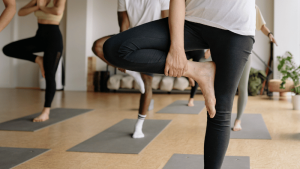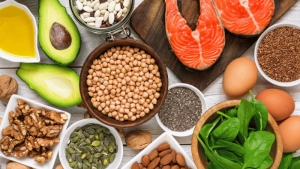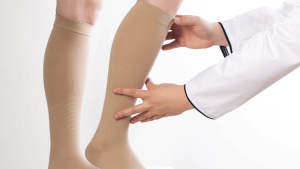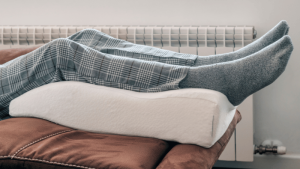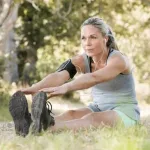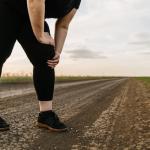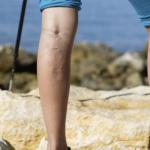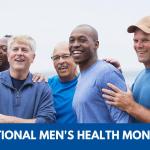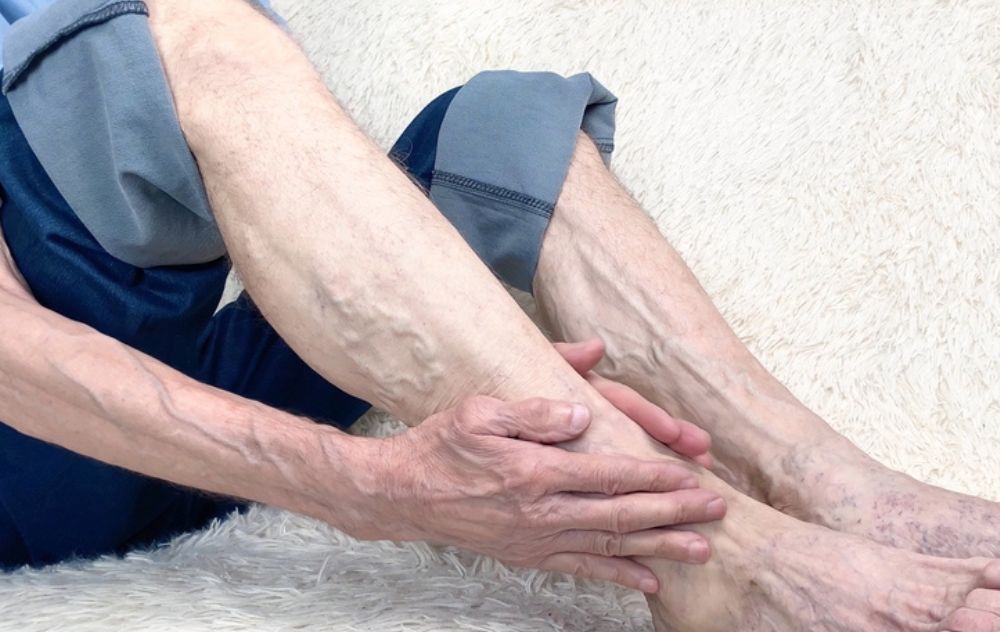
Are the veins in your legs becoming more visible? Our veins age and weaken over time, so people in their 50s and older are more likely to have varicose and spider veins.
Minimally invasive vein treatments can help to address damaged and weak veins, improving blood circulation and reducing your risk of developing other vein conditions, such as blood clots and venous ulcers.
Understanding the effects of aging on the veins can also protect your vascular health as you grow older. Your body might be getting older, but with an awareness of what’s changing, you can take steps to keep your veins healthier and prevent weakened veins from getting in the way of you living your best life.
What Happens to Veins as You Age?
Age is considered to be an important independent risk factor in venous disorders. While common issues like varicose veins can develop earlier, they’re more common in adults over 50.
There are a few reasons for this.
First, the cells in vein walls are sensitive to age-related decline. The cells that form an interface between circulating blood and the rest of the vessel wall are called endothelial cells, which grow weaker over the years, resulting in less elasticity and more inflammation of vein walls. The connective tissue in the veins also lessens, and the vein valves become thicker and less flexible, leading to overall frailer veins that can’t pump blood efficiently toward the heart.
These age-related vein issues have a downstream effect on vein health. When blood can’t pump upwards as it should, it pools in the veins of the lower extremities — the feet, legs, and ankles. This puts more pressure on the already damaged vein walls and valves.
The result is often twisted, bulging veins (varicose veins), as well as the appearance of reddish or bluish superficial veins under the skin (spider veins and reticular veins).
But these are only the visible symptoms. The underlying cause of these vein issues is chronic venous insufficiency (CVI), also known as vein disease. This condition also causes other symptoms, including leg pain, swelling, restless legs, and skin changes.
Vein disease can start in your 30s, 40s, or earlier. As it progresses through the years, it can cause more noticeable symptoms — chronic venous insufficiency usually starts with spider veins and varicose veins but can lead to more serious issues such as swelling, pain, and ulcers on the legs.
Schedule a Vein Consultation Online
Effects of Aging on the Veins
The weakening of vein valves and the walls of the veins is part of the aging process. However, there are other ways that aging can affect veins that you should look out for including
Lifestyle Changes
People tend to be less active in their 50s, 60s, and 70+s than they were in their 20s, 30s, and 40s, contributing to vein issues. According to research shared by the CDC, about 11% of women and 15% of men over age 65 get enough exercise. The American Heart Association recommends 150 minutes of physical activity weekly for a healthy heart and vascular system.
Less physical activity slows down circulation, which exacerbates the problems associated with aging veins. Poor circulation leads to more blood pooling in the veins and more damage to vein walls and valves.
Aging Skin
Our skin starts to become thinner as we get older. This is because the body’s production of collagen — the main structural protein found in connective tissue, including skin — begins to decrease starting in our 20s. Factors such as sun exposure also impact the skin’s volume.
When our skin thins, the veins under our skin are more visible. In some people, these visible veins can appear greenish or blue-green color, or they can look bluish-purple. Ultimately, the color doesn’t matter — whether you see green veins or blue, the bottom line is your veins might be more visible simply because your skin is thinner than it was when you were younger.
Hormonal Changes
Hormonal changes during pregnancy and menopause also play a role in the development of vein issues. That’s one of the reasons varicose veins are more common in women — it’s estimated that there are 22 million women over the age of 40 that have varicose veins in America.
Pregnancy may cause vein issues temporarily. But with menopause, the effects don’t go away.
During menopause, levels of the female hormones estrogen and progesterone drop. This hormone change is connected with an increased risk of developing varicose veins.
How to Support Vein Health as You Get Older
As individuals reach their 50s and 60s, many seek treatments for signs of aging, such as spider veins and age spots. Fortunately, there are effective measures to support vascular health, including minimally invasive vein treatments and lifestyle changes.
Simple changes to your daily routine, at-home remedies, and vein care can all support your veins as you age. Here are five things you can do to care for your veins.
1. Regular Check-Ups with a Vein Specialist
As you age, visiting a vein specialist for regular check-ups becomes increasingly important. These specialists can assess the health of your veins, identify potential issues early on, and provide personalized advice and treatments. Regular check-ups can help you avoid vein problems and ensure your veins remain healthy as you age.
2. Increase Your Exercise Level
How much exercise you get — and the type of exercise — impacts your veins. When you exercise, muscle contractions push on the veins, which helps push blood back to the heart. Stronger leg muscles can also support good circulation for the same reason.
Aim for regular physical activity to keep your veins and blood circulation healthy. Ideally, get 30 minutes every day.
Good exercises for vein health include walking, cycling, yoga, and swimming. These exercises support blood circulation without exposing the body to heavy impact.
Running and lifting weights are also excellent types of physical activity, but if you’re new to these activities and already have vein damage, talk to a vein specialist about what’s right for you. Your doctor may recommend building up to running and lifting weights to protect your veins.
3. Maintain a Healthy Weight
Being overweight can put more pressure on your veins, increasing your risk of vein disease.
Maintaining a healthy weight can protect your veins from damage. This is especially important for your aging veins, which may not be able to take a lot of pressure and may be frailer than they were in the past.
Eating a healthy diet rich in fruits, vegetables, lean proteins, and whole grains and getting regular exercise can help you reach and maintain the ideal weight for your body and age.
4. Wear Compression Stockings
Compression stockings put pressure on your leg veins without causing discomfort. This helps to support healthy blood flow to the heart and prevent blood from pooling in the legs.
You can purchase compression stockings over the counter. Your doctor might also recommend compression stockings to help treat an existing vein condition.
5. Elevate Your Feet
Putting your feet up isn’t just relaxing. It can also help your veins and lead to smoother circulation.
When you are standing for long periods, the valves in your leg veins have to work harder to pump blood upward. By elevating your feet so they’re above your heart, gravity does some of the work.
Use pillows to elevate your feet above your heart. Sitting for about 15 minutes with your feet elevated can help support your veins.
Schedule Your Consultation With A Vein Specialist
If you already have vein symptoms, such as varicose veins, leg swelling, pain and stiffness, and dry, itchy skin on the legs, it’s a good idea to see a vein specialist before your veins worsen.
A doctor specializing in vein disease can diagnose any existing vein issues and recommend a treatment plan to help.
At USA Vein Clinics, our vein doctors can diagnose vein issues in our offices using advanced ultrasound technology. We also offer minimally invasive vein treatments if you do need care, making it easy to improve your vein health and protect your veins as you age.
You may be considered if age can play a role in the effectiveness of varicose veins. There are many treatment options available that improve your vein health, circulation, and mobility.
Learn more about how we can support your vein health as you age — explore our treatments for varicose veins and spider veins. You can also schedule a consultation with a vein specialist at a USA Vein Clinics location near you.
Sources:
- Molnár, Andrea Ágnes et al. “The aging venous system: from varicosities to vascular cognitive impairment.” GeroScience vol. 43,6 (2021): 2761-2784. doi:10.1007/s11357-021-00475-2
- Dyer, Joseph M, and Richard A Miller. “Chronic Skin Fragility of Aging: Current Concepts in the Pathogenesis, Recognition, and Management of Dermatoporosis.” The Journal of clinical and aesthetic dermatology vol. 11,1 (2018): 13-18.
- Elgaddal N, Kramarow EA, Reuben C. Physical activity among adults aged 18 and over: United States, 2020. NCHS Data Brief, no 443. Hyattsville, MD: National Center for Health Statistics. 2022. DOI: https://dx.doi.org/10.15620/cdc:120213.

